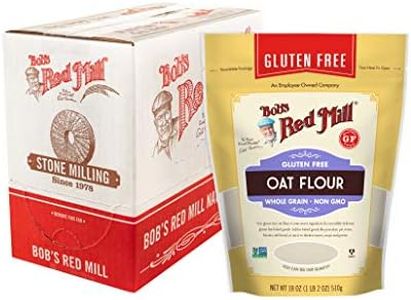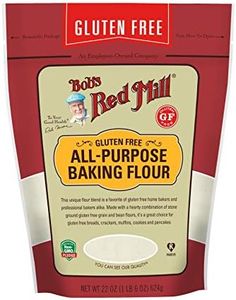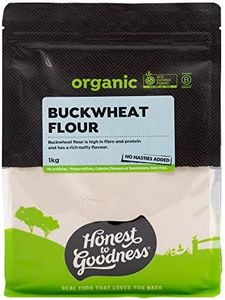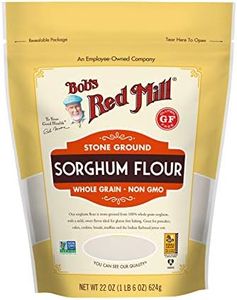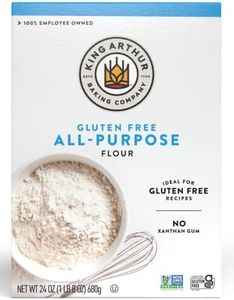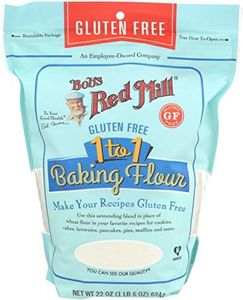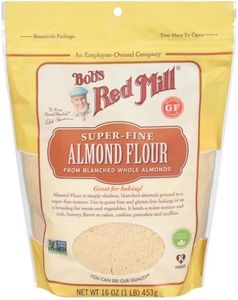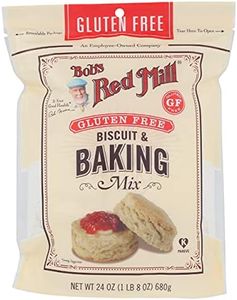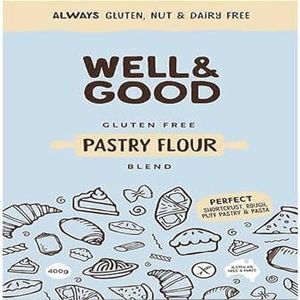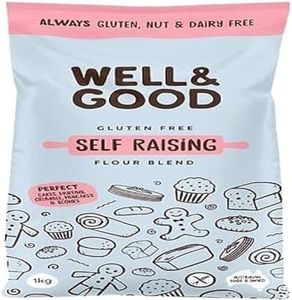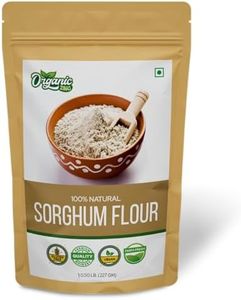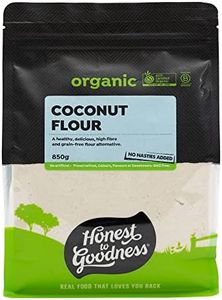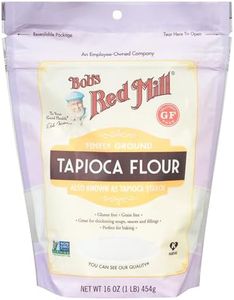We Use CookiesWe use cookies to enhance the security, performance,
functionality and for analytical and promotional activities. By continuing to browse this site you
are agreeing to our privacy policy
10 Best Gluten Free Flours
From leading brands and best sellers available on the web.By clicking on a link to a third party's website, log data is shared with that third party.
Buying Guide for the Best Gluten Free Flours
Choosing the right gluten-free flour can feel daunting, but understanding the main differences will help you find the perfect fit. Since there isn’t one single flour that mimics all-purpose wheat flour’s properties, most gluten-free baking involves blends or selecting flours based on what you’re trying to make. The best approach is to think about the recipes you’ll be preparing and the resulting taste, texture, and nutrition you prefer.Type of Grain or Base IngredientGluten-free flours come from a wide variety of sources such as rice, corn, oats (certified gluten-free), almonds, coconut, buckwheat, and beans, among others. This matters because each base imparts a distinctive flavor, color, and nutritional profile. For instance, rice flours are neutral and versatile, almond flour is rich and nutty, while coconut flour is slightly sweet and absorbs more liquid. If you want a mild taste and basic use, rice or potato-based flours are good; for more fiber or protein, consider almond or chickpea flour. Pick based on dietary needs, allergies, and your preferred flavors.
Texture and FinenessTexture refers to how coarse or fine the flour is milled. Finer flours dissolve easily into batter and work best for cakes and pastries, lending a smooth crumb. Coarser grinds add more texture, which can be good for rustic breads or muffins. If you’re after delicate, light results—think cookies or pancakes—opt for finer flours; if heartiness or chew is desired, a coarser option works best.
Binding PropertiesWheat flour naturally contains gluten, which binds ingredients for structure. Many gluten-free flours lack these binding abilities, so some have natural stickiness (like tapioca or sweet rice flour), while others are crumbly (like almond flour). If you’re baking something that needs to hold together (like bread or pizza dough), look for flours with stronger binding, or use a blend with added binders like xanthan gum or psyllium husk. If you’re making sauces or pancakes, weaker binding isn’t usually an issue.
Flavor ProfileGluten-free flours have flavors ranging from neutral to strong and distinct. Coconut and buckwheat flours have pronounced tastes, while rice and potato flours are much milder. Choose based on the type of dish and whether you want the flour to stand out or blend in. For example, neutral flours are best for flexible, everyday baking, while distinctive ones work well for adding unique depth to recipes.
Nutritional ContentDifferent gluten-free flours vary greatly in nutrients. Some, like almond or chickpea flour, are high in protein and fiber. Others, such as tapioca or potato starch, are low in nutrients but good for texture. Consider your dietary goals: pick flours high in protein or fiber for more nutritious bakes, or starchier options if you’re just after the classic texture and taste.
Purpose/Function in RecipeSome flours are great multi-taskers, but others shine in specific roles—like tapioca for chewy finishes, or oat flour for soft treats. Think about what you’re making: cakes benefit from light, fine flours with subtle flavors, while breads might need a heavier, nutritious blend and better binding. Check whether the flour is recommended for baking, thickening, frying, or as a base for blends.
Allergen ConsiderationsWhile gluten-free flours eliminate wheat, some are based on other common allergens like nuts, soy, or corn. It’s crucial to read labels if you have food allergies or intolerances. Always ensure the product is produced in a gluten-free-certified facility to avoid cross-contamination if you have celiac disease or strong sensitivities.
